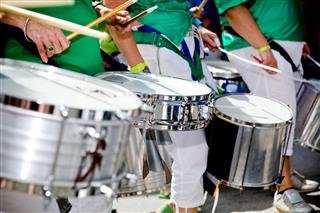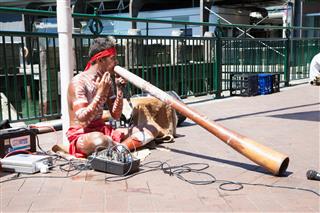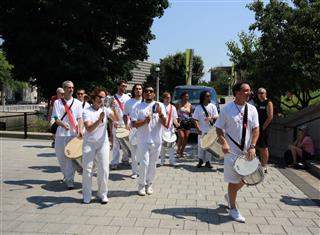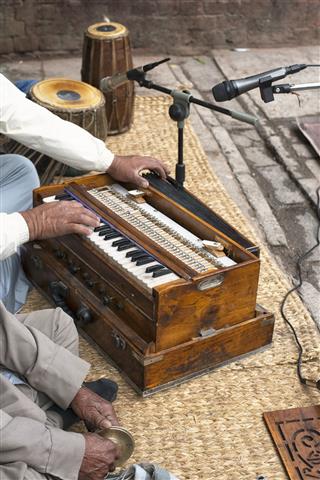
There are thousands of genres in the world of music today. How did they originate? Read on to know more about some of the major musical genres in the world.
What is music? For some a blissful experience to be enjoyed along with a glass of the finest red, for some a distraction during a boring treadmill session! Some would consider Beethoven’s piano sonatas a copyrighted property of the Lullaby Channel, some would struggle to pronounce ‘bougarabou’ (which is an African drum, by the way), and some would mock Indian classical music — the oldest surviving school of music — as sheer wailing!
Sounds never evoke the same emotions in different people. Thus, a comprehensive and universal definition of music is practically nonexistent. Having said that, some would consider it an exercise in futility to go ahead and try to define a list of musical genres. Fortunately, while some maintain that sounds such as a car horn and a crash of a falling plate constitute genres in themselves, the rest of the world has been sensible enough to discern musical genres from mere noise.
What is a genre?
A genre is a group of styles of music having a common tradition or common fundamental values. It can be likened to a genus in taxonomy, which is constituted by animals sharing a common evolutionary ancestor and having some distinct anatomical commonalities, despite vastly different superficial appearances. To further the rather snug-fitting analogy, a music genre is further divided into subgenres — just like species in a genus. Superficially, the species may look nothing like each other in their present-day forms, but they evolved from the same ancestor. The concept of the ‘species’ of subgenres can be best explained by the huge number of disparate-sounding subgenres currently grouped under the titular title ‘Rock Music’.
In modern times, the all-consuming music industry often has a larger say in creating a new genre than the music itself. Numerous modern genres can be said to have been thus inspired as a commercial gimmick, rather than an artistic endeavor.
Music, in its broadest division, can be classified into two styles: Western, and Oriental. African music can be included as a separate genre, but quite a few African styles have made their way into Western music via immigrant African-Americans; hence it has been included in the category of Western Music.
Within Western music, the following classification can easily be made:
Western Music
Rock

The umbrella term ‘rock’ is used to describe a large variety of musical styles. The origins of this stupendously popular style lie in a fusion of two other popular genres — Blues and Country, along with significant elements of jazz. Along with the influences from the two styles, rock and roll was typified by extensive use of the snare drum. The ‘rock and roll’ movement of the mid-1950s revolutionized the music scene in the West, with the proponents of this innovative and flamboyant style shaping the trends in racism, fashion and lifestyle. Rock and roll — especially Glam Rock — artists’ garish costumes were famous, and in the racially inflamed 1950s, rock and roll provided an avenue for the appreciation of popular music without segregation. The success of the Rock and Roll movement is personified in the everlasting fame of ‘the King’, Elvis.
In the late 60s and early 70s two popular rock subgenres developed: Hard Rock and Heavy Metal. Both have gone on to become massively popular. The contemporaneous emergence of inventive guitarists such as Jimi Hendrix, Jimmy Page and Eric Clapton helped mold the malleable style of Rock music into numerous other popular styles. The term ‘rock’ music has since gone on to represent a massive range of styles, many often sounding nothing like the original ‘rock and roll sound’. The all-encompassing term ‘rock music’ includes everything from the melodious Beatles to the aggressive Carcass and Deicide.
It can be said that rock music is the most popular genre of music in the history of mankind.
Notable bands:
The Beatles, The Rolling Stones, The Byrds, The Yardbirds, Led Zeppelin, Aerosmith, Queen, U2, AC/DC, The Who, Pink Floyd, Nirvana, Red Hot Chilli Peppers
Notable Performers:
John Lennon, Paul McCartney, Little Richard, Elvis Presley, Jimi Hendrix, Chuck Berry, Buddy Holly, Jimmy Page, Jeff Beck, Mick Jagger, Ronnie Wood, David Bowie, Syd Barrett, Alice Cooper, John Entwistle, Roger Daltrey, Keith Moon, Kurt Cobain
Subgenres:
Heavy Metal, Death Metal, Garage Rock, Psychedelic Rock, Black Metal, Glam Rock, Punk Rock, Hard Rock, Jazz Rock, Acid Rock, Christian Metal, Art Rock, Alternative Rock, Dream Pop, Grunge, Indie Pop, Industrial Rock, Folk Rock, Folk Metal, Glam Metal, Electronic Rock, Experimental Rock, Goregrind, Deathcore, Metalcore, Doom Metal, Industrial Metal, Industrial Rock, Gothi Metal, Power Metal, Progressive Metal, Progressive Rock, Sludge Metal, Speed Metal, Thrash Metal, Desert Rock, Pop Rock, Folk Pink, Celtic Punk, Garage Punk, Grindcore, Hardcore Punk, Thrashcore, Pop Punk, Ska Punk, Skacore, Gothic Rock, Noise Rock, Rap Metal, Rapcore, Southern Rock, Sufi Rock, Raga Rock, Nu Metal, Sadcore, Slowcore, Post-Britpop, Post-Grunge, Indie Pop, Symphonic Metal, Stoner Rock
Jazz

Jazz developed among the black community of the Southern US. This can be called a ‘classical version’ of blues music. The African influence on this indigenous American style of music can be seen in the emphasis on improvisation and a combination of different but simultaneously played rhythms, which is very unusual in the Western tradition of music.
Jazz is often performed by ensembles (although single artists can play as well), with importance laid on their ability to play off each other, and improvise ex tempore. The improvisational style of jazz links it to Indian classical music, which also values improvisation over repetition of set melodies. This intrinsic commonality has produced numerous collaborations between jazz and Indian classical artists. Pt. Ravi Shankar, who frequently collaborated with Western musicians, is one of the most famous Indian musicians in the West. John McLaughlin, a noted jazz guitarist, formed fusion ensembles with Western and Indian musicians such as Zakir Hussain and Vikku Vinayakram.
Noted Performers:
Louis Armstrong, Miles Davis, Frank Sinatra, John Coltrane, Thelonious Monk, John McLaughlin, Billie Holiday, Benny Goodman, Ella Fitzgerald, Charles Mingus, Sonny Rollins, Dave Brubeck, Django Reinhardt
Subgenres:
Bebop, Acid Jazz, Avant-garde Jazz, Boogie-Woogie, Bossa Nova, Chamber Jazz, Continental Jazz, Cool Jazz, Crossover Jazz, Dixieland, Latin Jazz, Ethno Jazz, Free Jazz, Gypsy Jazz, Hard Bop, Jazz Blues, Jazz Funk, Jazz Fusion, Jazz Rock, Kansas City Jazz, Modal Jazz, Nu Jazz, Orchestral Jazz, Ska Jazz, Soul Jazz, Swing, West Coast Jazz, Stride Jazz
Western Classical

The classical music of Europe is (along with the much older Indian classical music) one of the oldest surviving styles in modern music. In direct contrast to its Indian counterpart and the Western style of jazz, European classical music values tradition and set renditions of melodies, without much scope for improvisation.
Classical music can be of several forms: Symphony, Sonata, Concerto, Suite, Cantata, Oratorio etc. These are either played on instruments such as a piano or a violin or sung.
Western classical music is categorized by period: Medieval, Renaissance,Baroque, Classical, Romantic, and Modern. The cutoffs of the periods aren’t strictly defined, but the convention is clear; The Medieval period ran till the early 15th century, Renaissance till the 1600s, Baroque till mid-1700s, Classical till the early 1800s, Romantic till the 1900s, when it gave way to the Modern. Western classical music really came into its own in the baroque and classical periods, graced by masters such as Vivaldi, Bach, Mozart and Beethoven.
Although classical music is often derided as ‘boring’, especially by the younger audience, it shouldn’t be forgotten that it is one of the oldest and most respected genres in world music.
Notable Composers:
Ludvig van Beethoven, Wolfgang Amadeus Mozart, Johann Sebastian Bach, Frederic Chopin, Antonio Vivaldi, Gioachino Rossini, Igor Stravinsky
Notable Modern Exponents:
Yehudi Menuhin (Violinist), Leonard Bernstein (Composer-Conductor), Igor Stravinsky (Composer), Claude Debussy (Composer), George Gershwin (Composer-Pianist), Yanni (Pianist-Singer)
Blues

Like jazz music, the blues genre originated from African Americans’ worksongs, and was built around the premise of simple lyrics sung in a simple tune. The simple, plain structuring of a blues song is open to innovations and improvisations; this has led to the emergence of several completely different styles, such as rock music. Since the blues genre was ingrained in local calls and worksongs, the subgenres of blues music are often named after places.
‘Dallas Blues’ is the first blues song ever published, in 1912. It was written by Hart Wand, and although there had been unpublished blues songs and published quasi-blues songs before his time, his was the first true blues song to be published.
Blues music was primarily played unplugged (with acoustic instruments). However, this began to change in the 1940s, and the entry of electric instruments — thanks to artists such as Muddy Waters — revolutionized blues music. Although many blues artists chose electric instruments, both electric and acoustic renditions of blues music are popular today. Jump blues, an energetic, fast type of blues music, is considered to be the precursor of rock and R&B music.
Rhythm and Blues, a subgenre of blues and jazz music, has developed to be considered as a genre in itself. The primary difference between mainstream blues and R&B is, as the name suggests, the dominance of rhythm. Popular genres such as soul and funk have derived from R&B.
Notable Performers:
Robert Johnson, Muddy Waters, Robert Nighthawk, Bessie Smith, “Blind” Lemon Jefferson, T-Bone Walker, Son House, Mississippi John Hurt, Bill Broonzy, Jimmy Reed, Bo Diddley, B. B. King
Subgenres:
British Blues, African Blues, Blues Rock, Canadian Blues, Chicago Blues, Country Blues, Delta Blues, Detroit Blues, Electric Blues, Gospel Blues, Hill Country Blues, Hokum, Jazz Blues, Louisiana Blues, Memphis Blues, Texas Blues, Soul Blues
Country

Like blues music, country music emerged from folk songs of the Southern USA in the early 1920s. Immigrants in the Appalachian Mountains area, who had brought along instruments from their own countries, merged their art-forms to form the famous genre of country music. Hence, it contained elements (and instruments) from various countries such as Ireland, Italy, Germany, and numerous African countries. Many of the early instruments in country music were string instruments, with the notable exception of the harmonica.
Country music has much in common with blues music; the simple, three-chord arrangement of songs is an important element found in early recordings of both of these genres. The simple arrangement in both these genres left much scope for innovation, and like the blues, country music has been adapted and molded by various artists in different forms.
The structuring and instrumentation of country music underwent several changes over the years. The early bands almost exclusively used string instruments. Around the 1940s, electric guitars and drums began to appear in country bands. Although rejected at first by purist audiences, they soon became an integral part of country music. The next two decades saw the emergence of the early strains of rock music. Elvis, who started as a country singer, helped the genre develop into the more energetic, upbeat rock-n-roll. Ray Charles too concentrated on country music around this period. Since then, country music has remained a popular genre in the US, and has undergone several successful transitions, giving rise to several popular subgenres.
Notable Performers:
Jimmie Rodgers, Elvis Presley, Vernon Dalhart, Fiddlin’ John Carson, Roy Acuff, Ray Charles, Garth Brooks, Willie Nelson
Subgenres:
Bluegrass, Cajun, Classic Country, Country Rock, Nashville Sound, Honky-tonk, Cowboy Music, Close Harmony, Dansband Music, Sertanejo, Truck-driving Country, Christian Country, Rap Country, Blues Country, Hillbilly, Progressive Country
Reggae

Reggae music has its roots in a Jamaican music style called Ska, based on R&B, Jazz and Caribbean musical traditions. Ska originated in the 1960s, and later spawned the world-famous genre of Reggae.
Like all Caribbean music genres, Reggae extensively uses drums, typified by high-pitched snares. It has also incorporated electric instruments, such as guitars (especially basses) and synthesizers. Unlike virtually every other genre, the drum rolls in reggae do not end with the cymbal.
The orchestra is the important part in reggae performances. Reggae is an instrumentation-based genre rather than a vocals-based genre, since with the right instruments, a ‘reggae version’ of any song can be quite easily made.
Notable Artists:
Peter Tosh, Bob Marley, Bunny Wailer, Lee “Scratch” Perry, Jimmy Cliff
Related Ska Subgenres:
Rocksteady, Lovers Rock, Ragga, Dub
Hip Hop

Favorite among youngsters all over the world, hip hop is one of the most popular modern genres of music. Hip hop music emerged as an offshoot of the hip hop movement in the 1970s. Centered in Bronx, the movement soon spread to the rest of the US, and hip hop music benefited from the expansion, becoming one of the most followed genres of the 1970s-1980s.
Since the 1990s, the genre has become synonymous with rapping, although rapping is only one part of hip hop music.
Notable Groups:
Public Enemy, The Roots, The Black Eyed Peas, Beastie Boys
Notable Performers:
Eminem, Snoop Dogg, 50 Cent, Kanye West, Akon, Ludacris, Hard Kaur, Fergie, will.i.am, Adam Yauch, Ad-Rock
Electronic

One of the more modern genres in world music, electronic music is based, as is obvious from the name, on electronic instruments. These instruments include instruments such as synthesizers, the electric guitar and the theremin. Electronic music is widely known in the form of House or Disco music. It gained in popularity among youth in the 1970s and 1980s, and has since remained a popular genre of pop music. Over the ages, electronic music was inculcated in various other genres such as metal, hard rock, R&B etc.
Notable artists:
Halim El-Dabh, Karlheinz Stockhousen, Robert Moog, Brian Eno, Afrika Bambaataa, David Mancuso, Wendy Carlos
Subgenres:
Ambient, Breakbeat, Acid Breaks, 4-beat, Chiptune, Disco, House, Electronica, Electronic Rock, Electronic Jazz, Downtempo, Electronic Art Music, Video Game Music, Europop, Synthpop, Electronic Dance Music, Drum and Bass, Alternative Dance, Goa Trance, Eurotrance, Dream Trance, Hardcore Dance, Digital Hardcore, Industrial Metal, Industrial Rock, 2-step, Electronic House, Acid House
Latino

Latino music evolved in Latin America, i.e., South and Central America, and the Caribbean. Some Latino styles, such as samba, rumba, salsa and tango, are popular all over the world. Bossa nova, listed as a subgenre of jazz music, is also a famous Brazilian music form. Many Latin forms have successfully blended components of American music into their own, and created highly popular genres, such as Tejano music.
Latino music is reputed for its emphasis on rhythm and the consequently intoxicating beats; the effervescent style of samba has become the symbol of Brazil. However, Latin operas and ballads are just as popular — at least in Latin America — as their upbeat counterparts. Different styles of music can be found across the numerous countries in Latin America, but all of them can be grouped together by the love of rhythm. Interestingly, Latino music is the only genre in Western music classified according to geography.
Especially in the Caribbean, the influence of Indian music can be clearly observed in genres such as Chutney music, and its subsequent reincarnations. Lyrics laced with Hindi and Bhojpuri, as well as traditional Indian rhythm patterns are seen in these genres. As with the African immigrants in the US, Indian immigrants in the Caribbean have helped shape the musical scene of the tropical islands.
Notable Performers:
Roberto Carlos, Heitor Villa Lobos, Joao Gilberto, Antonio Carlos Jobim, Dropati, Sundar Popo, Enrique Iglesias, Marc Anthony, Shakira
Subgenres:
Samba, Rumba, Bachata, Salsa, Tejano, Son, Calypso, Soca, Chutney, Chutney Soca, Mambo, Merengue, Ranchera
Oriental Music
Traditional Oriental

Traditions in Oriental music can stretch back to hundreds, even thousands of years. Indian Classical Music — the oldest surviving musical genre in the world — traces its roots to the Vedic period thousands of years ago, although it has undergone many transformations in the interim. Chinese and Japanese music traditions can also be traced back to the Middle Ages.
The music of China, Japan and Southeast Asia developed fairly independently; all three have long-standing traditions of music. The music in these three traditions focuses on ensemble singing. On the other hand, due to the Mughal conquest of North Indian Hindu empires, the highly malleable and miscible music of North India developed into an indiscernible mixture of Indian and Persian musical traditions, and retained the ancient Indian trait of being solely centered around the solitary artist.
Ancient Indian music was centered around chants, and songs sung primarily in praise of God. Due to the Islamic influence, the topic and composition of the lyrics changed, and so did the age-old style of music. Mughal composers and singers, such as Tansen, transformed Indian music into its modern format. The iconic Indian instruments tambora, the drone, and tabla, the Indian drum, also entered the realms of Indian music around this time.

Indian classical music is the only music that makes such an extensive use of, and gives such an importance to musical modes. In contrast to Western, Chinese, South Asian and Japanese music, Indian music places emphasis on the artist’s interpretation of a particular mode and his own style of singing, rather than a flawless facsimile of a composition written by someone else. As a result, ensembles are very rare in North Indian music, although it is an important part of the South Indian Carnatic school of music.
Some well-established genres of Indian classical music are Khyaal, Dhrupad and Thumri.
Many Western musicians studied Indian music and instruments extensively; notably, George Harrison took sitar lessons and collaborated with Indian sitarist Ravi Shankar. Ravi Shankar also performed at Woodstock, and at several other prestigious venues in the West. Indian music easily lends itself to fusion with other art forms, and especially in the late 20th century and 21st century collaborations between Indian and Western musicians became increasingly common. Many Indian classical musicians, such as Zakir Hussain, Taufiq Qureshi, L. Subramaniam have frequently collaborated with Western artists.
Oriental Pop

Pop music in Asia is heavily influenced by the Western pop scene. Western sounds began to make their way into Asian communities in the mid-20th century, and soon became popular all over the continent. Students studying in the West often brought home the musical influences of their stay in the West, and Asian pop music started to develop accordingly. Notably, in China these modern strains of music and its accompanying showmanship was considered vulgar and was thus banned!
Asian pop music has become increasingly famous in the West in the 21st century, borne out by the phenomenal response to the K-Pop (Korean Pop) song Gangnam Style. Topping the charts in numerous countries, the song made history by becoming the first video to garner a billion views on Youtube. The universal popularity of the K-pop song has resulted in it being hailed as ‘a bridge to international peace’.
Several Oriental artists, such as Ravi Shankar, A. R. Rahman and Tan Dun have won the Grammy, while Rahman and Dun also won the Academy Award for the best original score.
Film music in countries like India and Pakistan is often based on traditional principles, such as a composition based on a classical mode, but dominated by Western rhythms and electronic instruments. Songs from Indian and Pakistani movies are often the simplest examples of fusion.
It is impossible to create an exhaustive list of musical genres, since even the slightest change in the style, instrumentation or even the presentation, can be said to be a change in the genre itself. The one absolute truth about music is that whatever the genre, whatever the instruments, whatever the ensemble, there’s only one language – the beautiful, the divine, the melodious!










